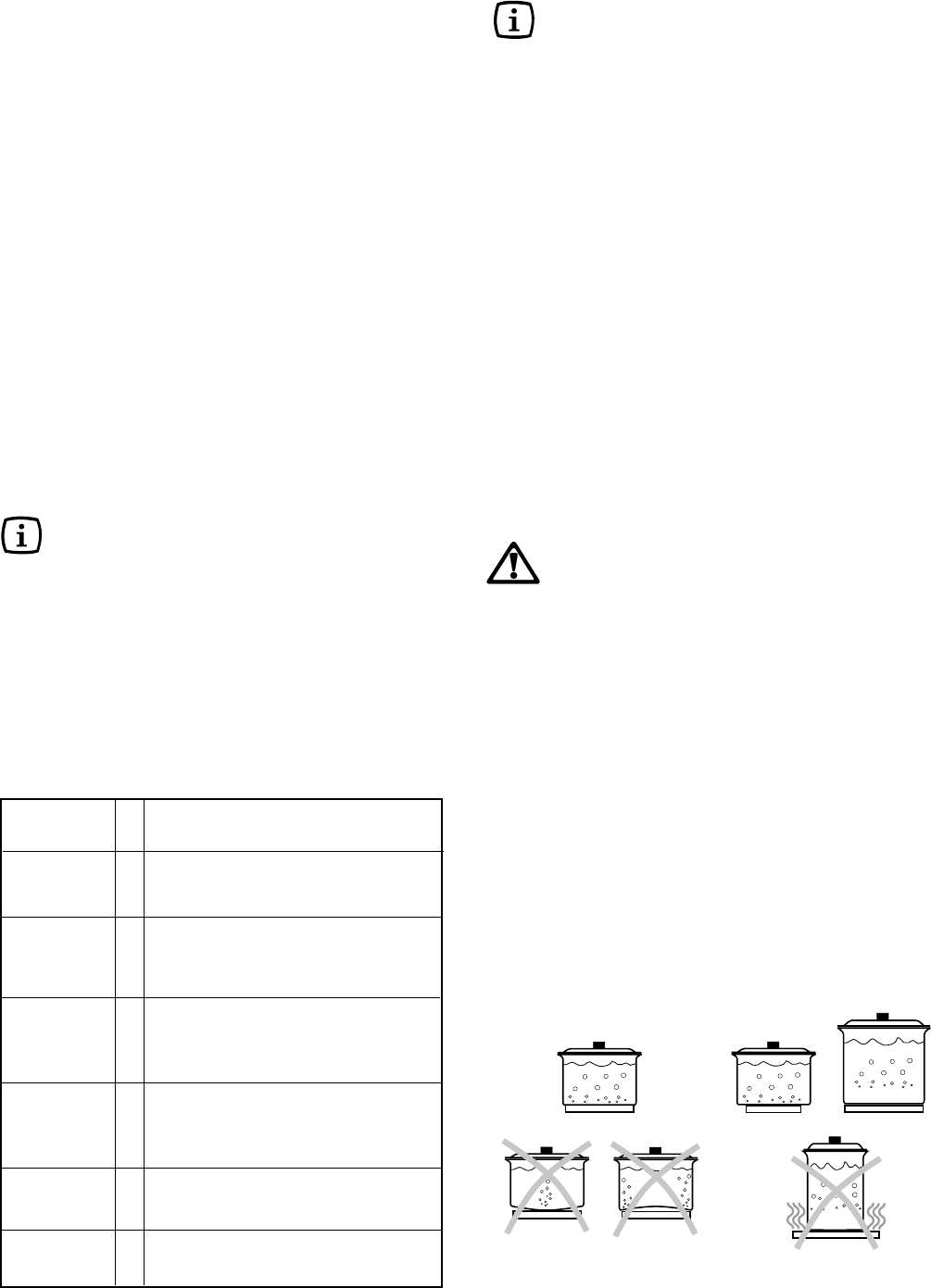
6
Hints and Tips
Saucepans for use on solid plates should have
several characteristics:
l They should be fairly heavy duty
l They should fit the heat area exactly, or be
slightly larger for efficient use, NEVER
smaller.
l They should have a flat base to ensure good
contact with the plate.
This is particularly important when using pans
for high temperature frying or pressure
cooking.
As soon as liquid starts boiling, turn down the
plate control knob so that it will barely keep the
liquid simmering.
You can switch off the plate a short while before
you finish cooking, and the final stage will be
completed on the accumulated heat. Similarly,
stews etc. cooked in well covered saucepans
cook at lower temperature which is more
economical.
Ensure pans are large enough to avoid
liquids being split onto the plates.
Never leave the plates on without a pan on
them or with an empty pan on them.
Take care never to lean or reach over a hot
electric plate. Always point pan handles
inward or over the work surface next to the
hob to avoid accidentally knocking over a
pan as you pass by.
Take care when frying food in hot oil or fat,
as the overheated splashes could easily
ignite.
If the control knobs become difficult to turn,
please contact your local Electrolux
Service Centre.
Electric Hotplates
To switch on a hotplate, turn the relevant control
knob to the required heat setting.
The control knob is numbered 0 - 6
0 - OFF
1 - Minimum
6 - Maximum.
The hob has two types of hotplates:
Normal Hotplates
We recommend the plates are switched to
maximum (6) for a short while to boost the plate,
and then adjusted to the required setting.
Rapid Hotplate (Front right)
The rapid hotplates indicated by a red spot, will
heat up more quickly than a normal plate.
Over a period of time the red spot may
disappear, this will not affect the perfor-
mance of the hotplate.
It is important to note that the plate may
smoke a little and produce a slightly
unpleasant odour when used for the first
time. This is quite normal and will
disappear after a few minutes.
Suggestions for the correct setting of the plates
are given in the following table.
Operation
OFF 0
Very Gentle 1 To keep food warm
To melt butter and chocolate
Gentle 2 To prepare cream-sauces,
stews and milk puddings
or to fry eggs
Slow 3 Dried vegetables, frozen
food, fruit, boiling water
or milk
Medium 4 Boiled potatoes, fresh
vegetables, pâtés, soups,
broths, pancakes or fish
High 5 Larger stews, meat roll, fish,
omelettes, steaks
Fast 6 Steaks, escalopes and
frying.


















